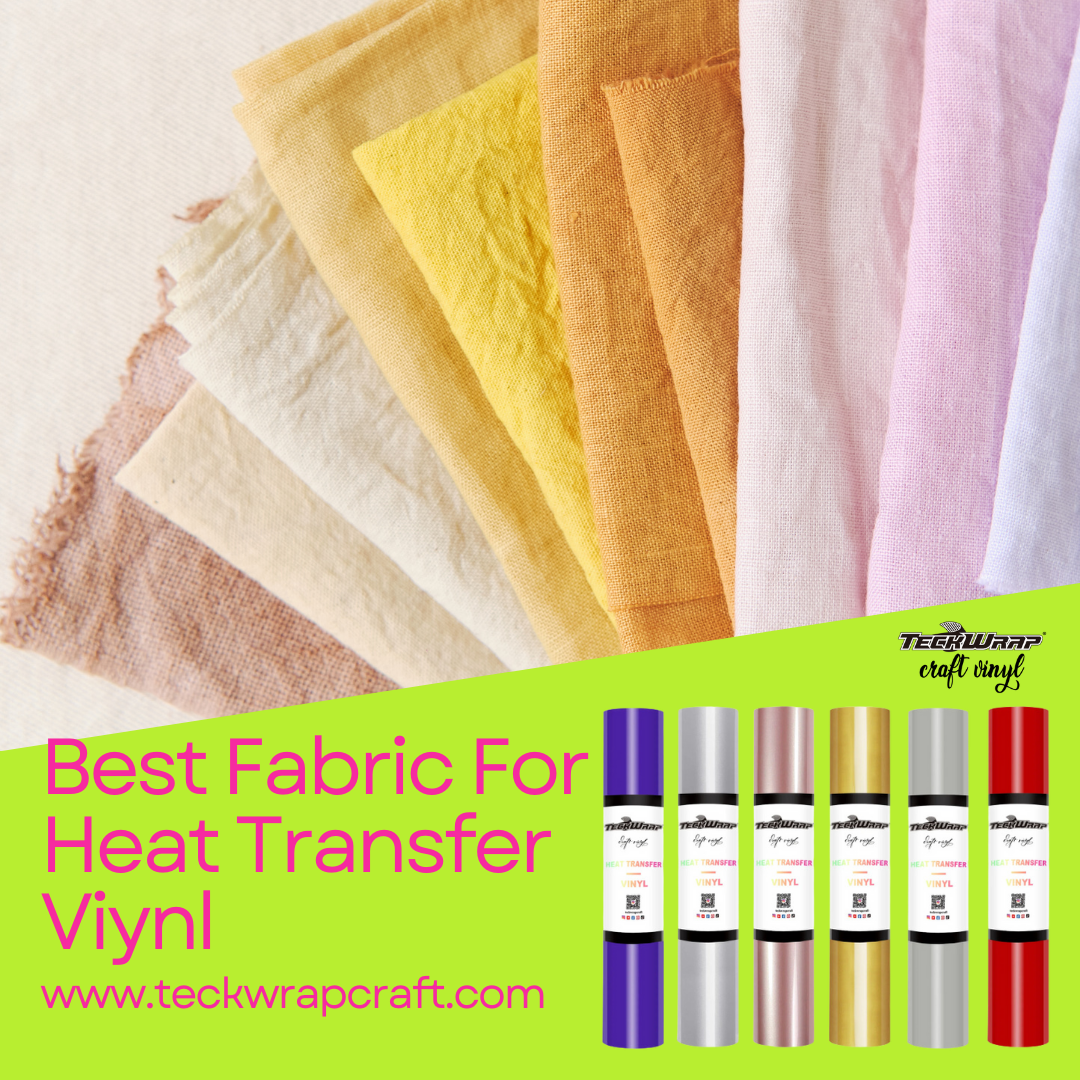Posted By TeckWrap Craft On March 11, 2023
Clear Iron On Transfer Paper For Dark Fabrics

Table Of Contents
- Clear VS Dark Iron On Transfer Paper
- Light Fabric VS Dark Fabric
- Light Heat Transfer Paper On A Dark Shirt
- Dark Transfer Paper On A Dark Shirt
- Inkjet VS Laser Printer
- Iron On Transfer VS Sublimation Paper
- Heat Transfer Paper VS Heat Transfer Vinyl
- Tips On Using Heat Transfer Paper
- Frequently Asked Question
Using heat transfer paper is a great way to design a shirt or accessories with fabric materials. For beginners, it’s quite confusing what kind of iron-on transfer to use.
So, we will discuss the difference between light and dark transfer. Plus, you’ll learn tips on how to use clear iron-on transfer paper for dark-colored fabrics and a lot more.
Clear VS Dark Iron On Transfer Paper
Clear heat transfer paper is used for light-colored fabrics. Other terms used by manufacturers of these papers are transparent or light transfer paper.
On the other hand, dark transfer paper is intended for dark-colored fabrics. So, how do you determine if a garment is light or dark-colored?

Light Fabric VS Dark Fabric
Light fabrics refer to white, beige, cream, or any natural colors while dark fabrics are those where the clear transfer doesn’t work. Often, the primary colors in the pigment wheel are considered dark when it comes to heat transfer designs.
A light transfer paper has a thin layer of polymer which will appear transparent when heat pressed onto a shirt. On the other hand, dark iron-on transfer paper has opaque backing, which makes it compatible with most dark-colored.
Light Heat Transfer Paper On A Dark Shirt
So, what happens if you use light transfer paper on a dark shirt? Well, the image printed on the paper will still transfer to your custom t-shirts.
You may or may not see the design depending on the colors you use. Designs may still show on some dark colors if you have used light colors. You can do trial and error but it will be a waste of time and materials. So, we recommend using light or dark transfer for light colors.

Dark Transfer Paper On A Dark Shirt
This is the ideal paper to use for dark shirts. Printing will be easier and you don’t need to think about whether your design will show or not. The only drawback is the white background.
For some DIYers, it can ruin the aesthetic quality of their printed t-shirts. But, with some techniques, you can make the white backing part of the overall design.
Inkjet VS Laser Printer
Here’s another thing about the transfer paper. What works on inkjet printers will not work on a transfer paper intended for a laser printer. So, be careful when buying your heat transfer paper. Inkjet is for inkjet and a laser is for laser.

Iron On Transfer VS Sublimation Paper
Both are transfer papers, except they need different inks for them to work properly. Sublimation paper printing doesn’t work with ordinary inkjet printers while you can print on iron-on transfer papers using your home printer.
But, there is heat transfer paper that requires a special pigment ink for them to work during the printing process.
Heat Transfer Paper VS Heat Transfer Vinyl
Both papers need heat and pressure to transfer onto a material. The difference lies in the printing materials. Heat transfer paper is a special paper with an either opaque or transparent layer. As mentioned, it has 2 types: light and dark.
On the other hand, heat transfer vinyl is a polymer or polyurethane material with adhesive on one side. Once the heat is applied to this material, it will adhere to the material.
Another difference is the type of design you can print. You can print complex designs on a transfer paper. Photorealistic ones are the best for heat transfer paper.
Bold and simple designs with minimal color combinations are the best for heat transfer vinyl. Although you can still cut designs manually with HTV, a cutter would make your DIY projects a lot faster to finish.
So, which one is the best? It depends on the designs and fabric you’re working on. Both materials are excellent ways to create amazing projects.

Tips On Using Heat Transfer Paper
- Trim blank areas before pressing. The coating of this paper will adhere to the fabric even if it has no design.
- Use parchment paper or any protective paper when transferring designs to your fabric.
- Preheat your fabric to remove the crease and make the transfer more effective.
- Set up the paper correctly so you’re printing on the right side.
- Always read instructions on the specific usage of a transfer paper.
- Cotton is a great t-shirt fabric but some heat transfer materials may not always work with this.
- For the best transfer of images, don’t wash your newly printed shirt for at least 24 hours.
- Transfer paper works on a lot of fabrics. But there are some projects and fabrics that you’ll need to use sublimation to get great results.
Frequently Asked Questions
Conclusion
Light heat transfer paper works best on a white t-shirt or any light-colored fabric. You can still use light transfer paper on dark fabric but with some limitations. Still, with the proper use of color combinations, you can work around this limitation. We hope this article helped you with your next iron-on project.





